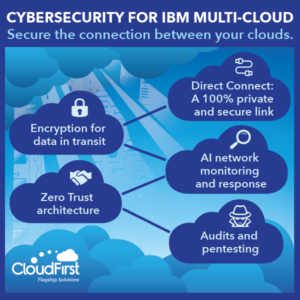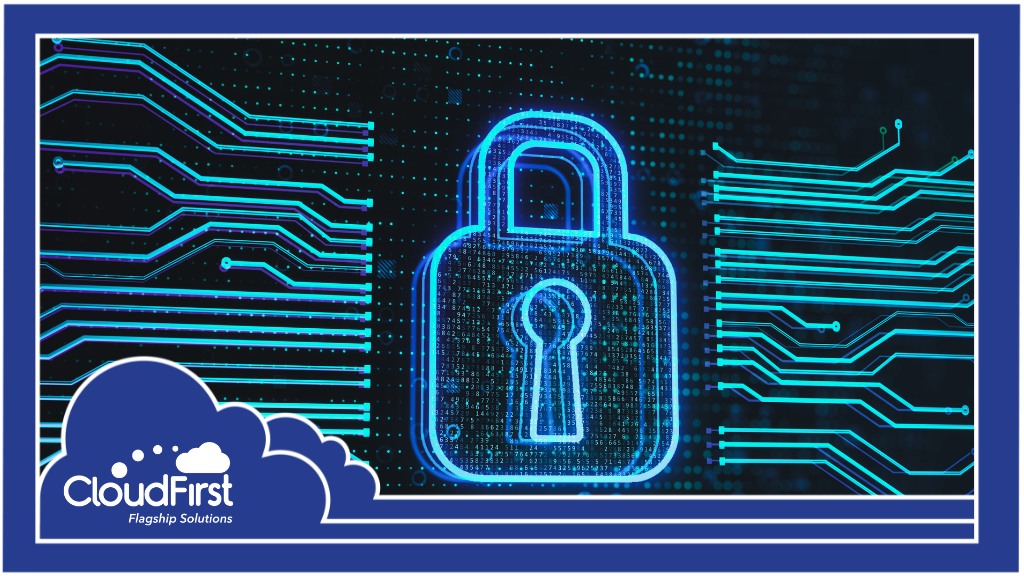“It’ll never happen to me.”
How often has a phrase like this been uttered by a business owner—only to have disaster strike anyway?
Unfortunately, it happens pretty often, but that’s not surprising. Security threats are becoming more sophisticated by the minute, making it challenging to fully grasp just how sneaky and damaging they can be.
And it’s not just the big guys, either: small businesses have also seen an uptick in cybersecurity threats. Infosecurity Magazine sounds the alarm, saying, “Nearly three-quarters (73%) of US small business owners reported a cyber-attack last year [2023], with employee and customer data most likely to be targeted in data breaches.”
That doesn’t inspire much confidence if you’re a small business owner, especially when losing employee or customer data to the wrong hands could bring catastrophic consequences. That said, it’s counterproductive to think you can’t implement new strategies that could be beneficial for your business because you’re afraid someone might try to take advantage of it.
If you’ve been concerned about cybersecurity while supporting different operating systems (IBM i, AIX, Linux on Power, etc) across several cloud service providers and how to secure multi-cloud computing, you’re in good hands. Here’s our detailed guide to the practices, strategies, and tools necessary to secure your IBM Power Systems cloud and its connection to other public clouds like AWS and Microsoft Azure.
Multi-cloud cybersecurity concerns
What threatens a multi-cloud environment? Concerns about proper data encryption and network monitoring spring to mind, as these are always a consideration in cybersecurity. And while Direct Connect often mitigates these concerns, a business should consider how using Direct Connect will impact their risk management plans.
A good example is with data encryption. Direct Connect uses a private connection, but if the data isn’t encrypted properly, it’s still susceptible to interception.
The IBM Power Systems cloud is an excellent way to scale resources up and down based on demand. It gives you much more flexibility in using and allocating your resources. Not only that, but establishing an IBM multi-cloud as part of your IT solutions can significantly lower costs and optimize your budget, since you’re only using what you need when you need it.
However, while there are a slew of impressive benefits, including those laid out by Harvard Business Review, no new implementation of an IT solution comes without its caveats and considerations.
What are the cybersecurity risks involved in multi-cloud environments?

Using a multi-cloud environment can be game changing for your business, but that’s only if you can manage to keep the connection and data secure. Here’s what you should be looking out for to ensure you’re doing everything you can to keep things protected.
Data privacy and compliance
The continued transfer of information between multiple public clouds can be nerve wracking. There are too many opportunities for something to get snatched out of thin air during transit.
Fortunately, most cloud hosting solutions provide businesses with holistic cybersecurity features that can help mitigate risk, but it’s up to each business to implement them properly. Using IBM Cloud Direct Connect can introduce more privacy and protection and ensure better compliance for handling sensitive information. Direct Connect is a private connection, so the chances of your data being intercepted are much lower, as is any tampering from hacking or other cyber threats.
Persistent, consistent threats
The evolving threat landscape poses significant risks when it comes to multi-cloud cybersecurity, partially because bad actors realize they can exploit a vulnerability there. Cyber threats such as malware, ransomware, phishing, and advanced persistent threats (APTs) require robust security measures to mitigate risks. And since these threats are becoming more intense by the day, many small businesses can’t keep up with how quickly these vulnerabilities morph into even greater ones.
The culprits are well aware of it, too. Forbes writes that “small businesses are three times more likely to be targeted by cybercriminals than larger companies,” meaning threats aren’t only getting more intelligent—they’re becoming much more likely to happen to your business.
The potential for disaster grows even greater when you consider lots of sensitive data traveling between data centers. A common cyberattack called man-in-the-middle is one of the more nefarious in these situations. This is when an attacker intercepts information during transference and potentially alters or copies it without you knowing.
A growing complexity
While multi-clouds are undoubtedly useful for a business, the tangled web between on-site IT resources and cloud-based ones can get worse if business owners and IT staff aren’t careful. Layering on different security protocols, unique architectures, and management tools can make it easier for things to slip through the cracks.
A good example would be the process of implementing security features. Different platforms have different features and compliance requirements. Any inconsistency could lead to a gap in security coverage, leaving your data vulnerable even if you have security measures in place.
Ensuring seamless communication and data flow between different environments while maintaining security can be difficult, which is why establishing processes and introducing protections for this is essential from the start.
The best practices for securing your multi-cloud

Knowing what to look for is half the battle. But what can you do about it before and after implementing an IBM multi-cloud? Here are some recommendations for ensuring that your data stays safe, no matter where it is or where it’s going.
Using zero trust architecture for IT
Zero trust is a security model that assumes no user or device, inside or outside the network, can be trusted by default. It sounds extreme, but it basically takes the concept of “better safe than sorry” and applies it to data transfer and holding. Nathan Parde at MIT News writes a compelling article about how it “may hold the answer to cybersecurity insider threats.”
A zero trust methodology would include aspects like MFA (multi-factor authentication) to bolster security, least privilege to ensure access is restricted only to those who need access, and continuous monitoring to respond to any suspicious activity in real time—before it gets the better of your business.
Encrypting data
Data encryption is a fantastic way to protect data, regardless of where it lives or moves. However, for data encryption to be as effective as possible, you want to implement strategies at every step, including data at rest and data in transit.
Direct Connect’s private connection means there’s added security in transit. Unlike with a VPN, no information ever travels over the open internet. But that doesn’t mean it isn’t still worth implementing data encryption as a necessary precaution.
Consistently assessing security needs and risks
The only way to ensure that your business is consistently safe from cybersecurity threats is to conduct regular assessments of your cloud environments. For example, you might use automated tools to help comb through data and point out any vulnerabilities in applications or services.
But more than that, you’ll want to test your systems to ensure they’re giving you adequate protection. This could include strategies such as simulating real-world attacks to see how your security measures react or doing security audits to adhere to regulatory requirements like ISO 27001.
Leveraging security tools
Finally, one of the easiest ways to keep your data protected within the IBM multi-cloud is through the built-in tools specifically designed for cybersecurity. One of the most popular IBM cybersecurity options is IBM Cloud Pak.
With impressive features like threat intelligence to better respond to threats as they emerge and data masking and encryption technologies, it’s a must for any business owner who wants round-the-clock protection. The features are straightforward yet powerful, enabling business owners to take advantage of them quickly.
Leading cloud providers like CloudFirst also partner with cybersecurity firms that specialize in securing IBM Power Systems. These include Fortra and Precisely.
Establishing secure connections for multi-cloud environments
There’s no shortage of people trying to pry their way into your network. Since bad actors are using sophisticated technologies—many of which are available for purchase online—businesses need to be prepared. The only response is to meet them with equally comprehensive cybersecurity solutions.
Aside from the built-in features that IBM i and cloud hosting platforms can provide, business owners must stay vigilant about new threats. You should also keep your ear to the ground for new ways to protect your data; a significant benefit of multi-cloud usage is that you can introduce new cybersecurity solutions without worrying about scaling.
Either way, building an IBM Power multi-cloud environment becomes a no-brainer once you realize how simple it can be with Direct Connect technology. And its value becomes even more evident once you realize how important it is to secure the connection between your IBM Power Systems cloud and your other IT.
Learn more about creating a secure, fast, and reliable connection between CloudFirst and your other public cloud infrastructure by downloading our free Direct Connect white paper today.

